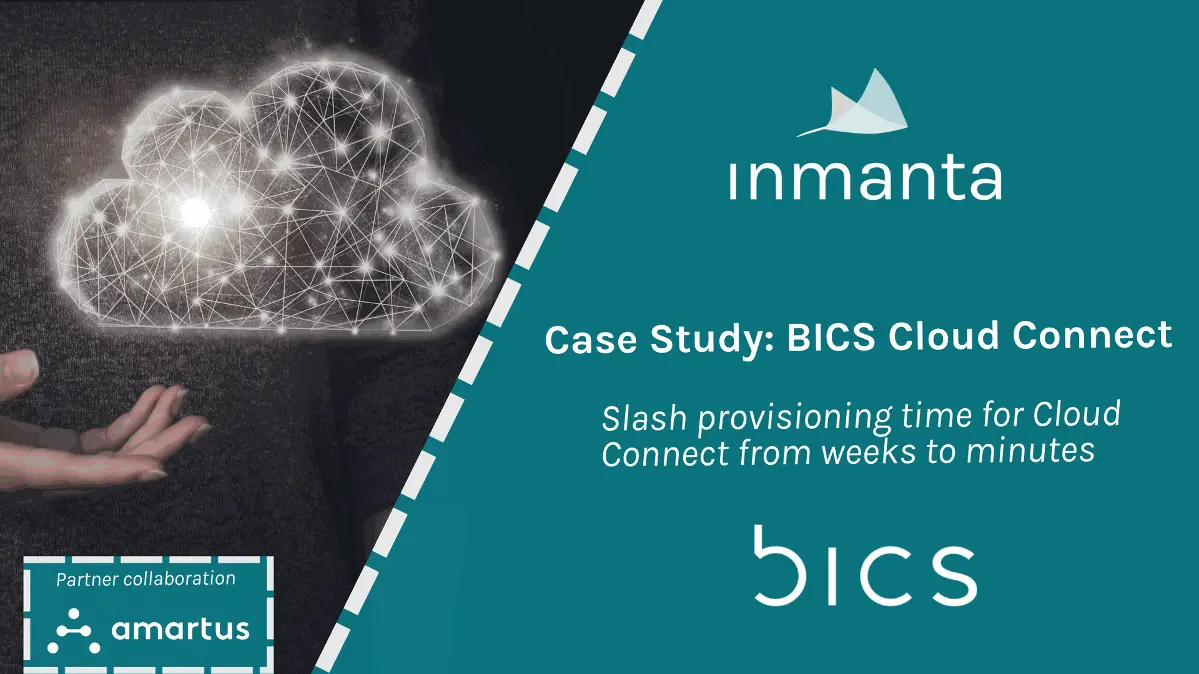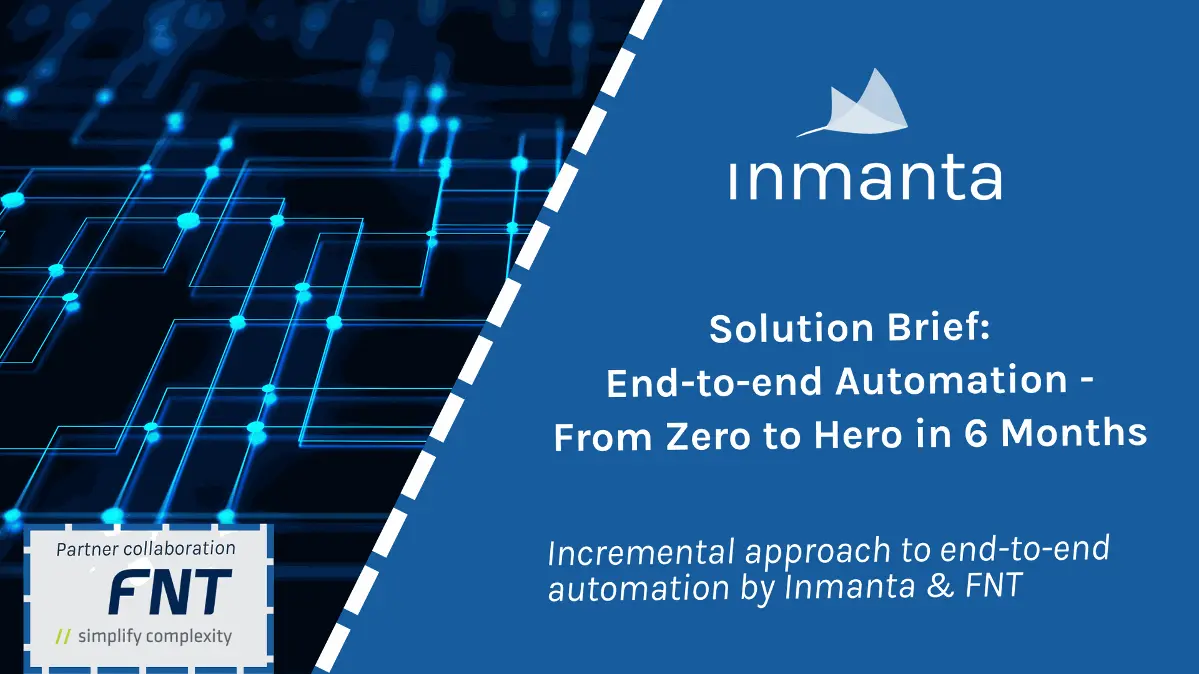-
Products
Inmanta Connect
Turnkey network automation solution for B2B & wholesale connectivityInmanta MPN Orchestrator
Scalable lifecycle management of mobile private networks (MPN)Inmanta Service Orchestrator
Intent-based, multi-domain service orchestration platform
Case Study: BICS Cloud Connect
Read how we can slash your provisioning time from weeks to minutes.
Download the BICS Case Study - Solutions
-
Insights
Blog
Discover more about Inmanta, products, and latest newsResources
Solution briefs, data sheets, reports, and case studies available to downloadDocumentation
Learn more about the latest Inmanta product releases
End-to-end Automation: From Zero to Hero in 6 Months
Learn more about our incremental approach to E2E automation with FNT
Download the Solution Brief - Company